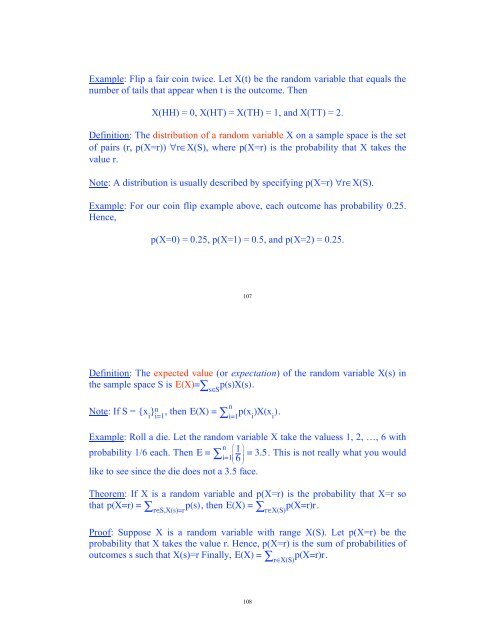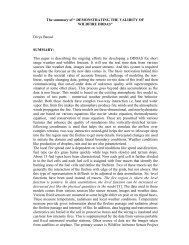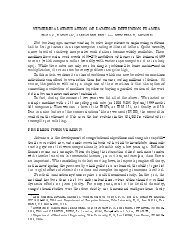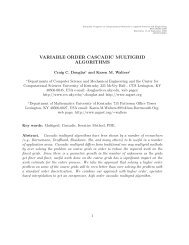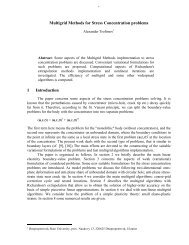Discrete Mathematics University of Kentucky CS 275 Spring ... - MGNet
Discrete Mathematics University of Kentucky CS 275 Spring ... - MGNet
Discrete Mathematics University of Kentucky CS 275 Spring ... - MGNet
You also want an ePaper? Increase the reach of your titles
YUMPU automatically turns print PDFs into web optimized ePapers that Google loves.
Example: Flip a fair coin twice. Let X(t) be the random variable that equals the<br />
number <strong>of</strong> tails that appear when t is the outcome. Then<br />
X(HH) = 0, X(HT) = X(TH) = 1, and X(TT) = 2.<br />
Definition: The distribution <strong>of</strong> a random variable X on a sample space is the set<br />
<strong>of</strong> pairs (r, p(X=r)) (r,X(S), where p(X=r) is the probability that X takes the<br />
value r.<br />
Note: A distribution is usually described by specifying p(X=r) (r,X(S).<br />
Example: For our coin flip example above, each outcome has probability 0.25.<br />
Hence,<br />
p(X=0) = 0.25, p(X=1) = 0.5, and p(X=2) = 0.25.<br />
107<br />
Definition: The expected value (or expectation) <strong>of</strong> the random variable X(s) in<br />
the sample space S is E(X)= " p(s)X(s) .<br />
s!S<br />
n<br />
i=1<br />
Note: If S = {x i<br />
} n i=1<br />
, then E(X) = ! p(x i<br />
)X(x i<br />
).<br />
Example: Roll a die. Let the random variable X take the valuess 1, 2, …, 6 with<br />
n<br />
!<br />
$<br />
probability 1/6 each. Then E = 1<br />
' = 3.5. This is not really what you would<br />
i=1"<br />
# 6 %<br />
&<br />
like to see since the die does not a 3.5 face.<br />
Theorem: If X is a random variable and p(X=r) is the probability that X=r so<br />
that p(X=r) = " , then E(X) = " p(X=r)r .<br />
p(s)<br />
r!S,X(s)=r<br />
r!X(S)<br />
Pro<strong>of</strong>: Suppose X is a random variable with range X(S). Let p(X=r) be the<br />
probability that X takes the value r. Hence, p(X=r) is the sum <strong>of</strong> probabilities <strong>of</strong><br />
outcomes s such that X(s)=r Finally, E(X) = " p(X=r)r .<br />
r!X(S)<br />
108


